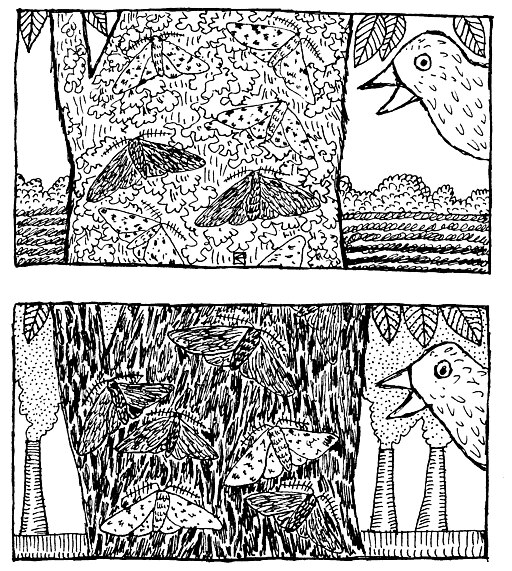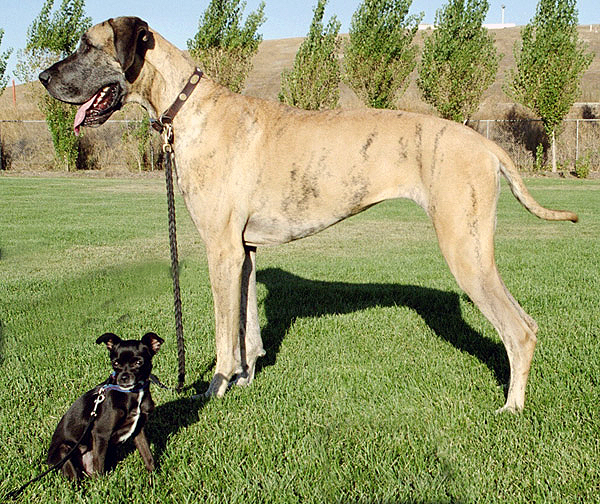The driving force behind the origin of all living species
and all species to have ever lived is theorized to be natural selection.
Natural selection is simply a mechanism that drives the evolution of organisms
in an environment based on their traits. Through humans understanding of
natural selection, they have been able to forcefully evolve certain animals to
have more desirable traits; this is called artificial selection or
domestication. Continue reading for clarity on natural and artificial
selection.
Natural Selection
The Theory of Natural Selection was first published by
Charles Darwin in 1859 in his book The Origin of Species. After decades
of research on the Galapagos Islands in South America, Darwin's observations
led him to this theory of natural selection. What Darwin proposed was this:
-There will be variation of traits in a population
- More organisms are born in a population than are able to
survive
- Organisms with trait(s) best adapted for the environment
will survive
- Survivors will reproduce and pass on those advantageous
traits to offspring, thus evolving the population over time
Hopefully that gives you some understanding to the name
natural selection. Organisms fit with the best traits for survival are
"naturally selected" to survive and pass on those traits to
offspring. Over time, the population will evolve to have a majority of
individuals that have the advantageous trait.
There are a few misconceptions about natural selection that
trip some students up when learning it:
- Individual organisms don't evolve, populations evolve.
Over the course of many generations, advantageous traits, as selected by the
environment, will be passed down by survivors to their offspring until the
majority of the population has evolved to have that trait. Variation in the
population arises from chance mutations in DNA that may or may not be
advantageous in a given environment. Individual organisms do not spontaneously
evolve into something better; it is a long gradual process.
- Evolution takes a long time. The Earth has been around 4.6
billion years and all of Earth's biological processes, including natural
selection, have been at work during this time, creating the planet we know
today. Natural selection happens over thousands of years gradually modifying
species based on traits from past ancestors. The only species we can see evolve
over a human life time is bacteria. They reproduce asexually at a rapid rate
allowing them to produce millions of generations in a relatively short amount
of time. That's why microorganisms such as yeast and e. coli are model
organisms in the lab for understanding natural selection.
- Natural selection doesn't fashion perfect organisms. It
simply selects for for whatever trait is beneficial in a given environment.
- Certain organisms aren't more "highly evolved"
than any other. Organisms will thrive in whatever environment they have evolved
to live in. For example, it may seem easy to say that a human is more highly
evolved than an arctic copepod (a tiny sea insect). Humans are bigger,
stronger, and smarter so of course we are the superiors species! However,
imagine LeBron James gets dropped into the middle of the arctic ocean without a
life vest on. I don't care how well you can dunk a basketball, an arctic
copepod is going to outlive a human in that environment because it is better
evolved for it.
Artificial Selection
Artificial selection, whether understood or not, is a
practice humans have engaged in since long before Darwin came up with the
Theory of Natural Selection. In
artificial selection, humans select which organisms to reproduce based on the
desired characteristics they want the offspring to have. This is a practice
used often in agriculture to yield the most crops/livestock as possible. This
has led to much bigger produce and animals to meet the needs of our growing
human population. The mechanism behind the evolution in artificial selection is
similar to natural selection, with the only difference being who does the
selecting. In natural selection, the environment selects for the best traits,
but in artificial selection, humans select for the best traits. The traits may
not even be the best, they just might be what humans find to be most desirable.
Both natural and artificial selection lead to the evolution of a population
over time.
Why Understanding
Natural Selection and Artificial Selection Is Important
Understanding natural selection is essential to humans
understanding the origin of life on Earth. It is such a perplexing question,
how could all things on Earth arise from nothing? The idea that all living
organisms arose from a shared common ancestor and that all living organisms are
a result of the descent of genes with modifications based on selective
pressures of the environment is the best theory we have. Understanding the
history of life gives us a better understanding of ourselves and how our bodies
function. It can also help us predict the future based on biological processes
that have occurred in the past. We can predict the evolution of bacteria to
become resistant to drugs, so scientists must continually come up with new,
effective, antibiotics. I'd say the theory of natural selection has laid a
foundation for how we perceive science and has certainly aided the survival of
humans.
Having a general understanding of genetics and natural
selection has allowed humans to virtually master artificial selection. Mastering
artificial selection has been monumental in providing food needs for an
exponentially growing population. The business of agriculture would be entirely
different if not for artificial selection.

